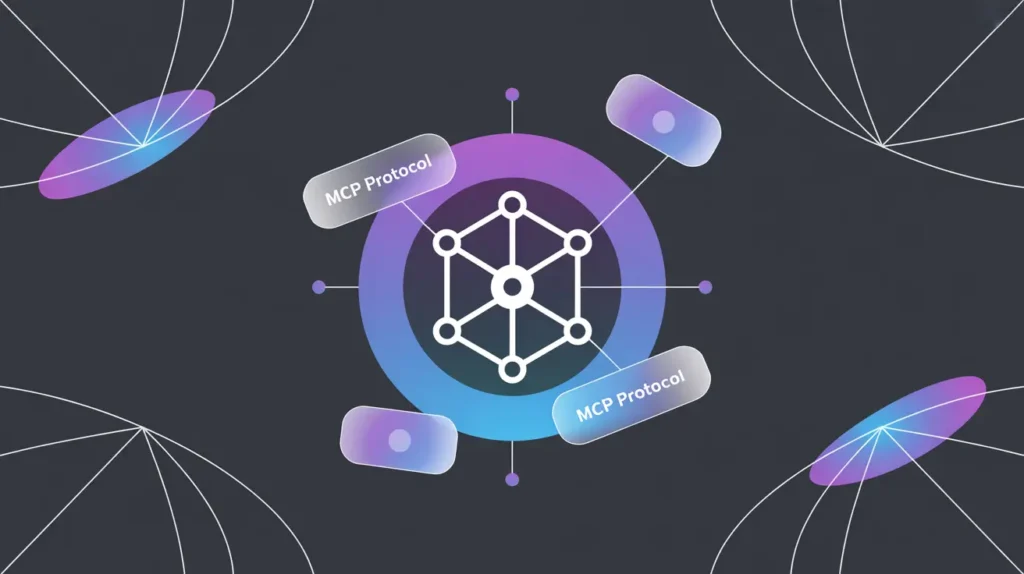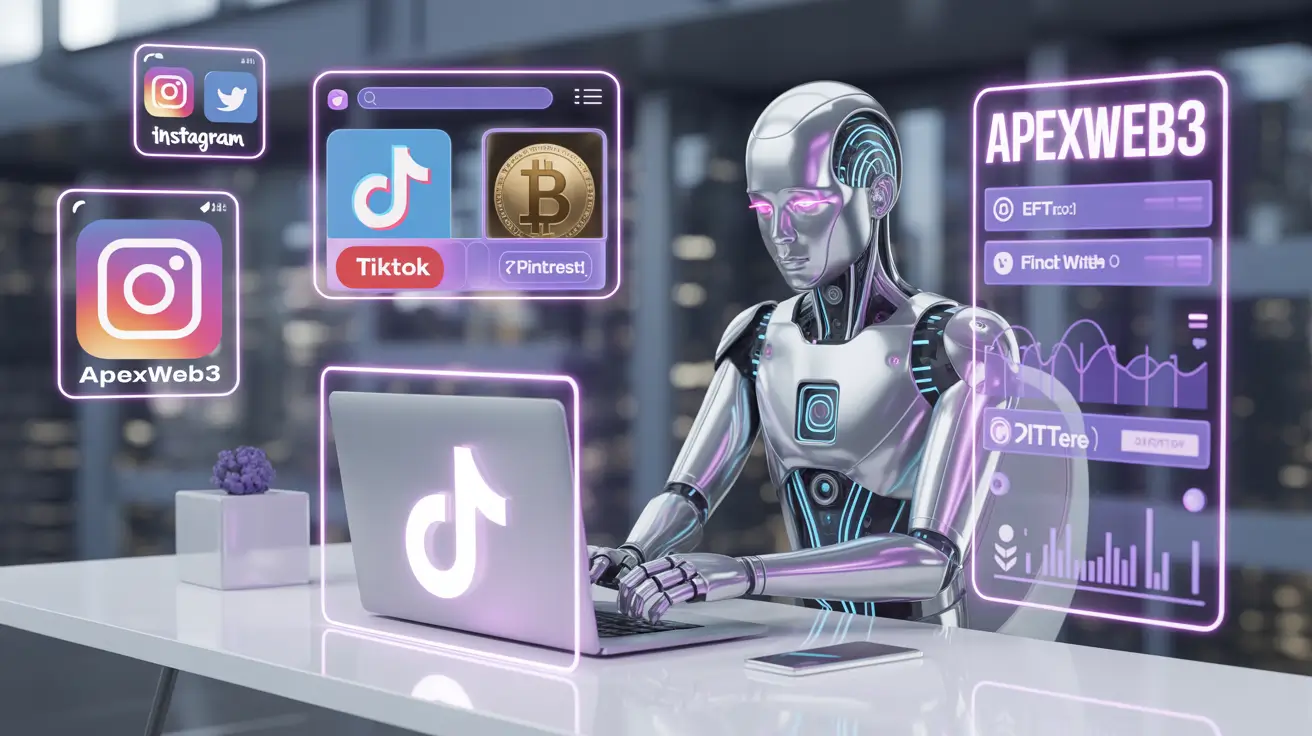The same way HTTP transformed the internet, MCP Web3 is about to revolutionize how AI agents interact with blockchain networks.
Table of Contents
The Web3 Developer’s Nightmare We All Live
Let’s be real for a second. Building in Web3 today feels like trying to perform surgery with oven mitts. You’ve got wallet integrations that break every other Tuesday, RPC endpoints that timeout when you need them most, and a toolchain so fragmented that even seasoned degens throw their hands up in frustration.
I was scrolling through crypto Twitter last week when it hit me we’re still manually bridging every single interaction between AI and blockchain. It’s 2025, and we’re copy-pasting wallet addresses into ChatGPT like cavemen. But what if I told you there’s a protocol brewing that could change everything?
Enter MCP Web3 the Model Context Protocol adapted for blockchain interactions. This isn’t just another shiny tool; it’s potentially the missing link that transforms AI from a parlor trick into actual Web3 infrastructure.
What Exactly Is MCP (Model Context Protocol)?
Think of MCP as the universal translator between AI models and external tools, but with a twist it maintains context throughout the conversation. Instead of treating each query as a standalone request, MCP AI protocol allows artificial intelligence to understand what tool it’s using and why it’s using it.

Here’s the breakthrough: Traditional AI interactions with blockchain are like shouting commands into the void. With MCP, it’s more like having a conversation with someone who actually gets the assignment.
Traditional approach: “Hey ChatGPT, what’s the gas fee for swapping ETH to USDC?”
MCP-powered interaction: AI agent understands your wallet balance, current network conditions, your DeFi history, and suggests the optimal swap route while automatically calculating slippage, all in one fluid interaction.
The difference? Context persistence. The AI doesn’t forget what happened three messages ago.
Why Web3 Desperately Needs MCP
The Current Blockchain Interaction Hell
Anyone who’s tried to build AI agents blockchain integrations knows the pain:
- Smart contract calls require perfect parameters (one wrong digit = funds gone)
- Wallet connections need constant re-authentication
- RPC management is a full-time job
- Multi-chain operations feel like juggling flaming chainsaws
AI’s Web3 Limitations Today
Right now, prompting ChatGPT about blockchain is like asking your grandmother to explain TikTok trends. Sure, it can regurgitate information, but can it actually do anything on-chain? Absolutely not.
Current AI in Web3 tools are mostly glorified calculators that can’t execute, can’t remember, and definitely can’t adapt to changing on-chain conditions.
MCP as the Game-Changing Bridge
MCP Web3 changes the entire game by allowing AI to:
- Maintain persistent connections to blockchain networks
- Remember transaction history and user preferences
- Execute complex multi-step operations autonomously
- Adapt to real-time market conditions
It’s like giving your AI agent a blockchain native brain instead of just a Web2 calculator.
Real Alpha: MCP Web3 Use Cases That’ll Blow Your Mind
DAO Management on Autopilot
Imagine an AI agent that:
- Monitors treasury balances across multiple protocols
- Proposes rebalancing strategies based on market conditions
- Schedules governance votes when certain thresholds are met
- Executes approved treasury operations without human intervention
Example: “Treasury is 80% ETH. Market looks bearish. Proposing 30% diversification into stablecoins. Vote scheduled for Friday.”
DeFi Portfolio Automation That Actually Works
Instead of manually managing your DeFi positions like it’s 2020:
Natural language command: “Stake 50% of my ETH in Aave, keep 30% liquid for opportunities, and put 20% in the highest-yield stable farm.”
AI agent execution: Checks current rates, calculates gas optimization, executes across multiple protocols, sets up monitoring for better opportunities.
NFTs & Gaming: Where Things Get Wild
Web3 automation reaches its peak when AI NPCs can interact with smart contracts:
- Dynamic in-game assets that evolve based on on-chain events
- Autonomous trading bots for gaming marketplaces
- Smart contract-powered storylines that adapt to player actions
Compliance & Security: The Boring but Crucial Stuff
AI agents scanning smart contracts for vulnerabilities, checking compliance requirements, and executing safe deployment protocols. Not sexy, but absolutely essential for institutional adoption.
The Agent Evolution: From Reactive to Autonomous
Here’s where MCP Web3 gets genuinely exciting. We’re not just talking about better chatbots, we’re talking about the birth of truly autonomous blockchain agents.
Before MCP: Reactive Bots
- Wait for commands
- Execute single actions
- Forget everything after each interaction
- Require constant human oversight
After MCP: Autonomous Decision-Makers
- Proactively monitor conditions
- Execute complex strategies
- Learn from previous interactions
- Operate independently within defined parameters
The Holy Grail Scenario
“Deploy me a token with governance rules and liquidity pool.”
An MCP-powered agent could:
- Design tokenomics based on your requirements
- Deploy the smart contract with proper security audits
- Create governance framework
- Initialize liquidity pools
- Set up monitoring and alerts
- Handle initial community onboarding
All from one conversational request.
Opportunities vs. Challenges: The Real Talk
🚀 Opportunities That Have Me Bullish
| Opportunity | Impact | Timeline |
|---|---|---|
| Simplified Dev Workflows | Democratizes blockchain development | 6-12 months |
| Agent Economies | New revenue streams for AI agents | 12-18 months |
| Mainstream Adoption | Web3 becomes as easy as Web2 | 2-3 years |
⚠️ Challenges That Keep Me Up at Night
- Reliability: What happens when the AI agent misinterprets a $100k transaction?
- Security: Rogue agents could drain wallets faster than you can say “rug pull”
- Trust: How do you verify an autonomous agent’s decision-making?
- Human-in-the-loop vs. Full Autonomy: Where do we draw the line?
The key insight: MCP Web3 will likely succeed in lower-stakes scenarios first (portfolio monitoring, data analysis) before moving to high-value autonomous trading.
The Future: When Web3 Becomes Conversational
Remember when GUIs revolutionized computing? Point, click, drag, and suddenly, anyone could use a computer. MCP Web3 represents the same paradigm shift for blockchain.
The UX Upgrade Web3 Desperately Needs
Instead of:
- Learning Solidity
- Understanding gas optimization
- Managing multiple wallets
- Tracking dozens of protocols
Users will simply… talk to their blockchain.
“Show me DeFi opportunities under $10k with >15% APY and low impermanent loss risk.”
The AI agent handles everything else.
Code = Conversation
We’re heading toward a future where blockchain interactions feel as natural as texting. Web3 automation stops being a technical skill and becomes as accessible as using voice commands.
This isn’t just speculation early MCP AI protocol implementations are already showing promising results in closed testing environments.
The Bottom Line: Why MCP Web3 Is About to Explode
The convergence of mature AI models, battle-tested blockchain infrastructure, and now MCP Web3 creates a perfect storm for the next Web3 revolution.
We’re not just talking about better tools; we’re talking about fundamentally reimagining how humans interact with decentralized systems. When your AI agent can understand context, maintain state, and execute complex blockchain operations autonomously, everything changes.
The early builders who understand and implement MCP Web3 will have a massive advantage. While others are still manually connecting APIs, you’ll be shipping AI-native Web3 applications that feel like magic to users.
Question for the community: What’s the first blockchain task you’d let an AI agent handle if MCP made it possible?
Want more alpha on AI x Web3? Check out our complete guide to Web3 AI agents and discover 10 game-changing AI x Web3 projects that are already shipping.
Stay ahead of the curve with Apex Drops – where Web3 meets AI meets alpha.




